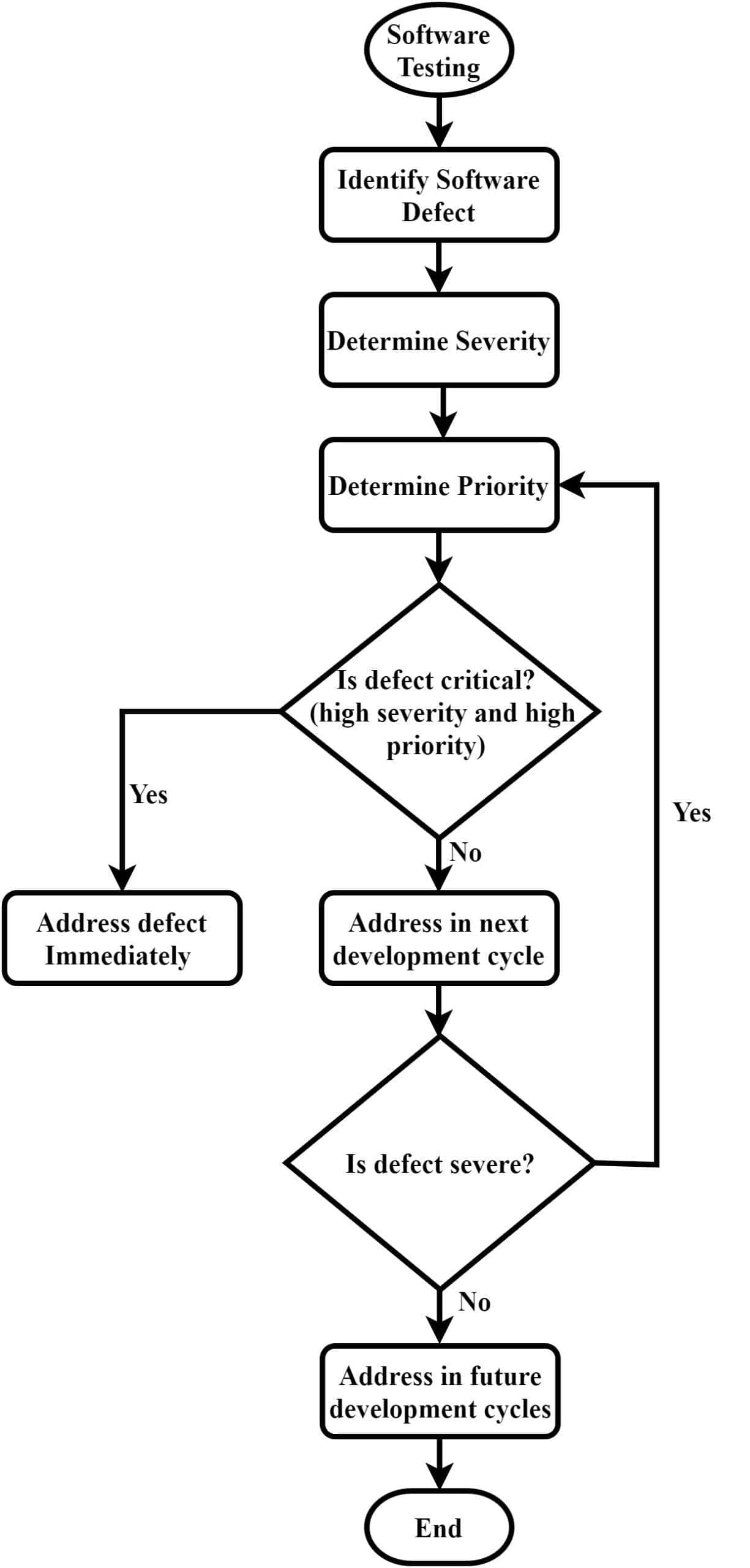Learn through the super-clean Baeldung Pro experience:
>> Membership and Baeldung Pro.
No ads, dark-mode and 6 months free of IntelliJ Idea Ultimate to start with.
Last updated: March 18, 2024
As software developers, we know how important it is to ensure our programs work well and meet users’ needs. One way to do this is through software testing, which looks for defects or bugs in software before it is released.
In this tutorial, we’ll focus on severity vs. priority in software testing. In software testing, these terms are frequently used interchangeably, but they have distinct meanings.
Severity and priority are two terms used to describe the impact and importance of a software defect.
Severity refers to the level of impact a defect has on the software’s functionality. It measures how severe the defect is and how much it affects the software’s ability to perform its intended function.
Priority is the order in which problems should be fixed based on how much they affect the business. A defect with a high priority needs to be fixed right away, while a defect with a low priority can be fixed later.
We need to distinguish between the two, as defects with high severity may not have high priority.
For example, a minor defect with a low severity rating may not significantly impact the software’s quality and functionality. Still, it could have a high priority rating if it affects a critical business process. On the other hand, a defect that has a high severity rating but doesn’t have a big effect on the business may have a lower priority.
Let’s take a look at their differences:
| Parameter | Severity | Priority |
|---|---|---|
| Definition | The severity of a defect on a software’s ability to perform its functions. | The urgency with which a defect needs to be addressed. |
| Relation | Severity helps determine the potential impact of a defect. | Priority helps determine the urgency of fixing a defect. |
| Importance | Severity is critical for identifying and comprehending the impact of defects and prioritizing resolution. | Priority is important to make sure that defects are fixed to meet the needs of the system and its users. |
| Decision | Software testers determine the defect’s severity. | Owners of the product determine the defect’s priority. |
| Impact | Severity relates to the impact of a defect on the software’s functionality. | Priority relates to the impact of a defect on the user or the business. |
The severity level is used to describe how a bug or defect affects the way the software works.
We can divide the severity level into four levels:
Similarly, we use the priority level to decide the order in which bugs need to be fixed based on how they affect users or the business. Priority levels can be different for each software program, and they can also be put into one of four levels:
We could use several criteria to figure out how bad or important a defect is, such as:
By considering these criteria, we can determine the severity and priority of a defect and prioritize them accordingly.
Now that we know about these criteria, let’s look at a flow chart of prioritizing defects based on severity and priority:

As we can see, severity is usually determined first, followed by priority. Once we determine the severity, we’ll assign the priority based on the urgency with which the defect needs to be addressed. This allows us to ensure that critical defects are addressed first while less critical defects are addressed promptly.
Severity and priority are closely related in software testing but are not the same. Severity measures the technical impact, while priority measures the business impact.
We need to consider both factors to determine the severity and priority of a defect.
Let’s have a look at a few examples:
| Severity | Priority | Definition |
|---|---|---|
| High | High | A defect that significantly impacts the user or business and requires immediate attention and resolution. |
| High | Medium | A defect that significantly impacts the user or business but can be addressed in the next development cycle. |
| High | Low | A defect that doesn’t significantly impact the user or business and can be addressed in future development cycles. |
| Medium | High | A bug that has a moderate effect on the user or business needs to be looked at and fixed. |
| Medium | Medium | A defect that has a moderate impact on the user or business and can be addressed in the next development cycle. |
| Medium | Low | A defect that has a minor impact on the user or business and can be addressed in future development cycles. |
| Low | High | A defect that has a minor impact on the user or business but requires attention and resolution. |
| Low | Medium | A defect that has a minor impact on the user or business and can be addressed in the next development cycle. |
| Low | Low | A defect that has no significant impact on the user or business and can be addressed in future development cycles.. |
The table above shows that a high-severity bug might not have a high priority if it doesn’t affect the user or business significantly. Similarly, a low-severity defect may have a high priority if it substantially affects the user or the business.
In this tutorial, we learned about the concepts of severity and priority in software testing and defect management. It is important to consider both severity and priority when determining the order in which defects should be addressed.
Best practices for prioritizing and addressing software issues include identifying and prioritizing critical defects, maintaining a defect tracking system, and communicating the status of defects to stakeholders.